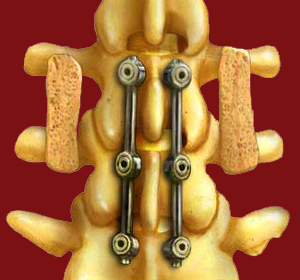
Facet joint fusion can occur due to surgical intervention or may take place organically. The spinal facets joints are designed to regulate the range of motion of individual spinal segments, as well as help regulate the overall mobility of the entire spinal column. Nature did not design the facet joints to be fused.
What exactly does fusion entail? What are the consequences of spinal fusion at the facet joints? What is our opinion on spondylodesis procedures that purposefully fuse levels of the spine? These are the most common questions that relate to the topic of facet joint fusion and those which will be addressed as part of this focused discussion.
This post explores the permanent joining of one or more levels of the spine at the facet joints due to fusion.
Facet Joint Fusion Causes
Most cases of spinal fusion are the direct result of surgical intervention in order to treat some variety of chronic pain. Spinal fusion is widely used to treat a wide range of conditions, including degenerated discs, herniated discs, arthritic issues, facet joint syndrome, atypical spinal curvature, spondylolisthesis and more. There is no more commonly utilized procedure for so many incredibly divergent diagnoses! The technical term for a spinal fusion operation is spondylodesis.
Spinal degeneration can also lead to organic fusion of the facet joints and vertebral bodies. This commonly occurs due to advanced desiccation of the intervertebral discs, compounded by arthritic accumulations in the form of bone spurs. Ossification of disc tissues and/or ligamentous tissues can also contribute to organic spinal fusion.
Consequences of Fused Facet Joints
The human spine is jointed for good reason. The design of the spine not only allows it to move in order to facilitate the full range of motion that we enjoy, but also provides consequences when the spine can not move as intended:
Spinal fusion will accelerate degeneration are areas of the spine which are not fused, potentially leading to additional levels of fusion.
Fused levels can fracture. This includes organic and surgical fusion. A fracture at a fusion might be very painful. It may also lead to central spinal or foraminal stenosis, soft tissue injury, micro-instability at the affected level or overall macro-instability of the entire spine. Fracture might occasionally contribute to serious spinal issues, such as the formation of spinal syrinx, spinal cord injury or spinal cord hemorrhage.
At the very least, facet joint fusion will cause stiffness and discomfort at the affected levels of the vertebral column, as well as reduce overall range of spinal motion.
Facet Joint Fusion Opinions
Most fusions are the result of purposeful action; spinal fusion surgery. We have long campaigned against this procedure as being unbelievably over-utilized, barbaric and mostly contra-indicated by diagnosis. Nevertheless, it remains one of the most common of all spinal operations, much to the detriment of humankind.
There are a few times when spinal fusion is the only treatment available, and for these circumstances, we understand, if not support, its use, despite its downsides. However, in the vast majority of cases where fusion is used, other and better therapeutic options exist. We encourage patients to pursue these alternate options if there is any chance at all to avoid fusion.
As for organic facet joint fusion, not much can be done. In some cases, the joint can be stabilized by additional fusion surgery and reinforcing hardware if the patient is suffering pain or multiple fractures. However, there is no sure way to re-establish normal movement once a facet joint has been frozen in place by arthritic accumulation.





